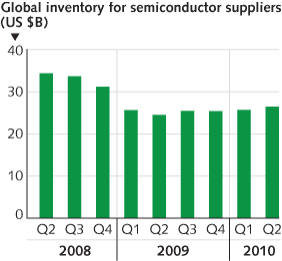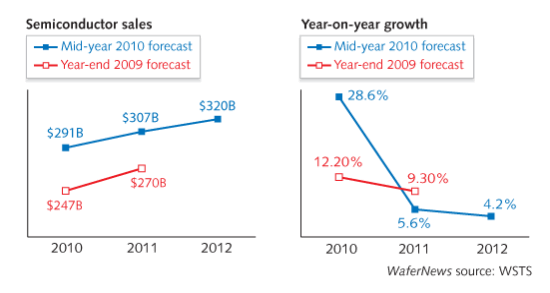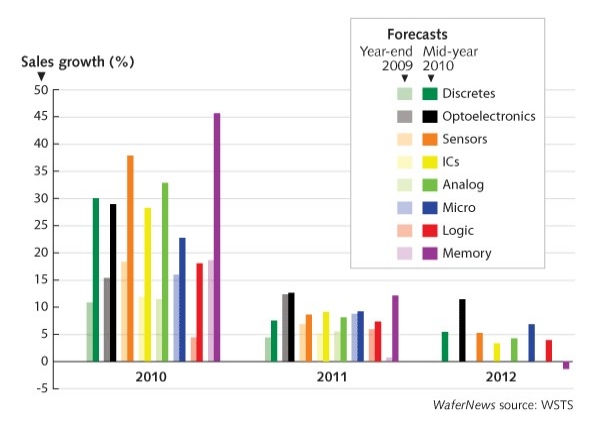(August 30, 2010 – BUSINESS WIRE) — Infineon Technologies AG and Intel Corporation have entered into a definitive agreement to transfer Infineon’s Wireless Solutions (WLS) business to Intel in a cash transaction valued at approximately $1.4 billion.
WLS, cellular platforms provider to global phone makers, will operate as a standalone business serving its existing customers. WLS will also contribute to Intel’s strategy to make connected computing ubiquitous from smartphones to laptops to embedded computing.
Analyst Craig Berger CFA, CPA of FBR Capital Markets on the deal
|
|
On the positive side, Infineon’s WSL is a well-executing, sizable presence in the cellular baseband market. He notes that Infineon’s 65nm HSUPA platform (XMM 6160), upcoming 40nm HSPA platform (XMM 6260), and "decent" 4G LTE products are competitive in the semiconductor market. Not to mention, smartphones and tablet PCs are increasingly popular with consumers. Intel can defend its CPU market share as tablets ramp by offering the Infineon baseband, the power Atom applications processor, the WindRiver mobile operating system, and also on-system mobile security from its pending McAfee acquisition.
|
|
|
Berger points out that, for Intel, execution risks loom. Go beyond the core Intel Architecture CPU markets, and Intel can get distracted. Berger is going to "generally remain skeptical of Intel’s ability to execute outside of core CPU market." If Intel fails to capitalize, Broadcom could benefit, scooping up some of the cellular broadband market share left on the table.
|
|
|
Read more analysis of the deal in the ElectroIQ.com Editors’ blog, in "What analysts say about Intel’s Infineon wireless buy"
|
“The global demand for wireless solutions continues to grow at an extraordinary rate,” said Paul Otellini, Intel president and CEO. “The acquisition of Infineon’s WLS business strengthens the second pillar of our computing strategy — Internet connectivity — and enables us to offer a portfolio of products that covers the full range of wireless options from Wi-Fi and 3G to WiMAX and LTE.” How will this purchase affect recent research that finds Samsung ready to unseat Intel in chip sales in four years?
“The sale of WLS is a strategic decision to enhance Infineon’s value. We can now fully concentrate our resources towards strong growth in our core segments Automotive (ATV), Industrial & Multimarket (IMM) and Chip Card & Security (CCS),” said Peter Bauer, CEO of Infineon Technologies AG.
The WLS transaction is a strategic decision for Intel and Infineon. WLS complements Intel’s existing assets and enables growth in mobile computing, smartphones and embedded computing. Infineon will benefit from this by stronger addressing three central challenges to modern society – energy efficiency, mobility and security.
Intel’s goal is to expand its mobile and embedded product offerings to support additional customers and market segments, including smartphones, tablets, netbooks, notebooks and embedded computing devices. Through this effort, Intel will pair WLS’ best-in-class cellular technology with its core strengths to enable the delivery of low-power, Intel-based platforms that combine its applications processor with an expanded portfolio of wireless options — bringing together Intel’s leadership in Wi-Fi and WiMAX with WLS’ leadership in 2G and 3G, and a combined path to accelerate 4G LTE.
WLS today holds leading positions in the field of wireless mobility and cellular platforms for smart phones and ultra-low-cost, entry phones. WLS provides baseband processors, RF transceivers, power management integrated circuits (ICs), additional connectivity features, single-chip solutions as well as the corresponding system software. This helps to enable the smooth transmission of voice and high-speed data from the backbone of the telecommunication network to the end user’s device. With annual revenue of Euro 917 million, WLS was approximately 30% of Infineon’s total annual revenue of Euro 3.03 billion in the past financial year.
The board of directors of Intel and the supervisory board and the management board of Infineon have approved the transaction. It is expected to close in the first quarter of 2011, subject to certain regulatory approvals and other customary closing conditions specified in the definitive agreement.
Infineon Technologies AG offers semiconductor and system solutions addressing three central challenges to modern society: energy efficiency, mobility, and security. Frankfurt Stock Exchange (ticker symbol: IFX) and USA over-the-counter market OTCQX International Premier (ticker symbol: IFNNY). More information is available at www.infineon.com
Intel (NASDAQ: INTC) develops technologies, products and initiatives to continually advance how people work and live. Additional information about Intel is available at www.intel.com/pressroom and http://blogs.intel.com





